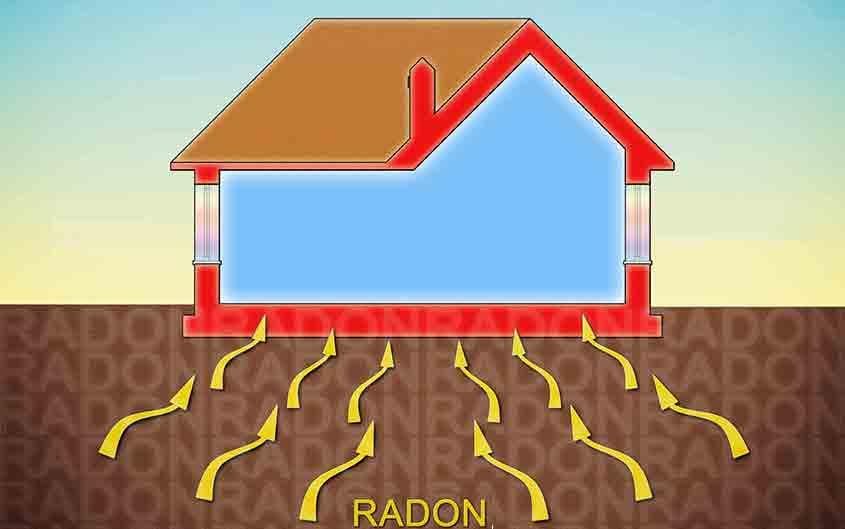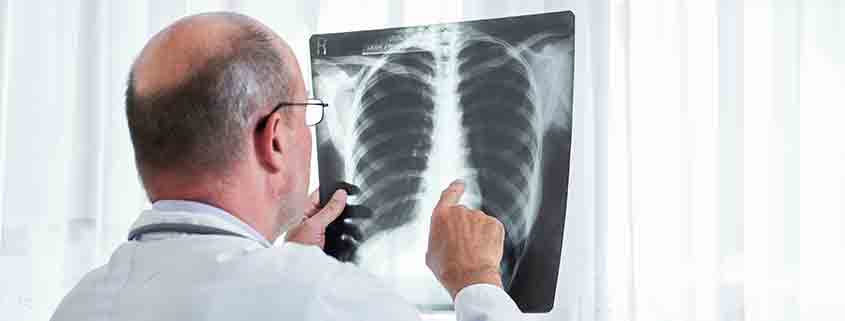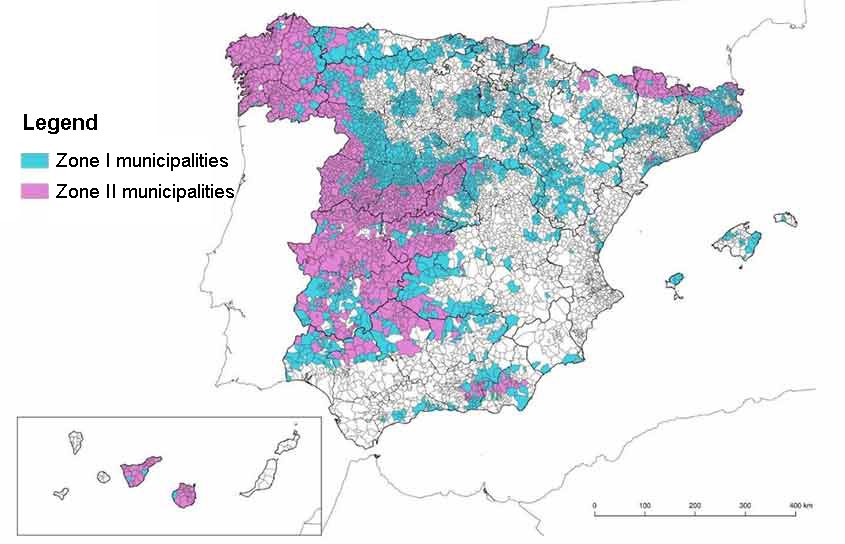Rambla Salvador Samà, 47
Vilanova i la Geltrú – Barcelona – Spain
CONTACT FORM

Radon gas is the most important source of radioactivity to which the population is exposed. On average, 43 per cent of the total dose.
It is a radioactive, but chemically inert noble gas that comes from the disintegration of uranium naturally occurring in the soil, especially granite. The human being does not detect it since it is characterized by being colourless, odourless and tasteless.
The greatest exposure usually occurs in the home. The radon gas is filtered through the construction materials that are in contact with the ground. It is concentrated in the enclosures that these delimit, especially those located in lower floors and basements.
Radon approximately lasts almost for four days, during which it disintegrates into other radioactive particles of polonium and lead.

After smoking, it is the second most important cause of lung cancer according to WHO. In case of a combination of smoking and high doses of radon gas, the risk of lung cancer is estimated to be 25 times higher.
However, it is also associated with other types of cancer. For example, a study by the Instituto Carlos III was published in magazines of renowned prestige showing the relationship between this gas and other types of cancer, specifically stomach and brain cancer in women.

Royal Decree 1029/2022, of December 20, establishes 300 Bq/m3 as the annual average reference level for radon concentration in homes, publicly accessible buildings and workplaces.
The regulations establishes the obligation to carry out radon measurements, especially in workplaces located in areas with higher potential radon levels such as ground and underground floors. If high radon values are detected, measures should be taken to reduce exposure, such as remediation, mitigation or the installation of radon reduction systems.
Previously, Royal Decree 732/2019 of December 20 included in the Technical Building Code (CTE) measures to reduce radon gas access to housing. Specifically, it established basic measures to avoid exceeding the annual reference level of 300 Bq/m3.
The CTE measures are mandatory for new buildings and also for changes of use or renovations in buildings located in the risk zones shown in the following map.

In buildings located in risk zone I, one of the following protective measures is mandatory:
In buildings located in risk zone II, the protective barrier must be provided, plus one of the following measures:
The reference level of the regulation (300Bq/m³) is higher than the limit recommended by the WHO (100 Bq/m³) to prevent lung cancer, and also exceeds the threshold established by other European countries around us (such as the United Kingdom, Ireland, Sweden and Norway).
Our recommendation is to measure radon gas in all those locations where the radon gas map shows that there is a risk of exceeding the 100 Bq/m³ threshold indicated by the WHO, mainly in Galicia, Extremadura, Madrid and in large areas of Catalonia, Andalusia, Aragon, Canary Islands and Navarra. There are more radon gas maps, such as the European map or the map of the United States of America.
Radon gas can be measured by direct-indication monitors and with short-term measurements under unfavorable conditions, usually about 24 hours without any ventilation. Longer-term measurements, preferably of 3 months duration, are the most accurate.

In places with moderate radon presence it is usually sufficient to ventilate regularly and cover any cracks in floors, baseboards and basement walls with silicone to achieve a level below 100 Bq/m³.
In other cases, radon gas measurements show that the above preventive measures are not sufficient. In these situations, constructive measures or mechanised ventilation must be carried out. They can be summarised in the following actions:
These are deep and costly remediation projects. Long-term measurements of at least three months are recommended.
Rambla Salvador Samà, 47
Vilanova i la Geltrú – Barcelona – Spain

2025 © Copyright - Carles Surià